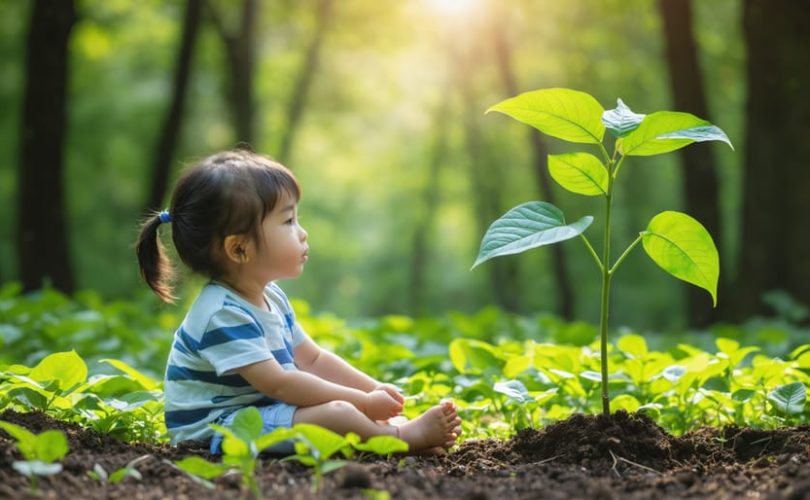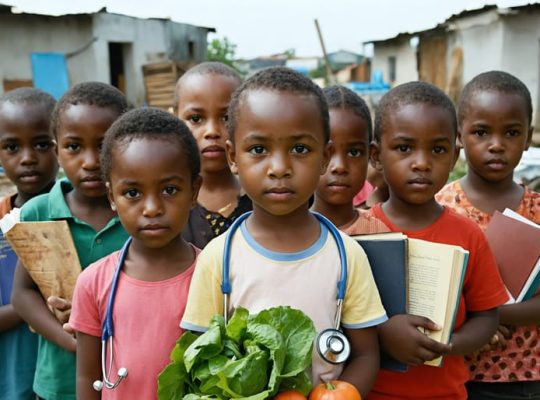As parents, we’re witnessing how climate change increasingly affects your child’s mental health, from anxiety about natural disasters to feelings of helplessness about the future. Recent studies show that up to 45% of children experience climate-related stress, making this an urgent concern for families worldwide.
Yet within this challenge lies an opportunity to build resilience and hope. While the reality of climate change can feel overwhelming, understanding its psychological impact on our children allows us to provide better support and guidance. By acknowledging these concerns while fostering positive action, we can help our young ones develop emotional tools to face environmental challenges constructively.
This article explores the complex relationship between climate change and children’s mental well-being, offering practical strategies for parents and caregivers. We’ll examine how to recognize signs of climate anxiety, discuss effective ways to address environmental concerns with children of different ages, and share expert-backed approaches for nurturing psychological resilience in an changing world.
Dr. Sarah Chen, child psychologist and environmental anxiety specialist, notes: “When we equip children with both understanding and agency, we transform fear into empowerment. The key is balancing honest discussion with hopeful action.”
Let’s explore how we can support our children’s mental health while nurturing their connection to environmental stewardship.
Understanding Climate Anxiety in Children
Signs Your Child May Be Experiencing Climate Anxiety
Children often express their climate anxiety in different ways than adults, and recognizing these signs early can help you provide the support they need. Many parents report noticing their children becoming increasingly worried after learning about environmental issues at school or through media exposure.
Common emotional signs include expressing frequent worry about the future of the planet, showing distress when seeing news about natural disasters, or becoming upset about endangered animals. Some children may repeatedly ask questions about whether their family will be safe or if there will be enough resources in the future.
Behavioral indicators might include:
– Difficulty sleeping or having environmental-themed nightmares
– Loss of interest in outdoor activities they once enjoyed
– Becoming withdrawn or irritable when environmental topics arise
– Expressing feelings of helplessness or anger about environmental issues
– Showing excessive concern about waste, recycling, or energy use
– Avoiding nature documentaries or news that they previously enjoyed
Physical symptoms can also manifest, such as headaches or stomach aches when discussing climate-related topics. Some children might experience difficulty concentrating in school, especially during lessons about environmental science or current events.
As Dr. Sarah Chen, child psychologist, notes, “It’s important to validate these feelings while helping children find constructive ways to channel their concerns. Climate anxiety in children often stems from feeling powerless in the face of such a large issue.”
Remember that some level of concern about the environment is normal and healthy. The key is identifying when these worries begin to interfere with your child’s daily life and well-being.
Age-Specific Responses to Climate Change
Different age groups process and respond to climate change information in unique ways. Young children, typically between ages 4-7, may express their concerns through play or drawings, often mixing environmental worries with magical thinking. They might worry about animals losing their homes or show anxiety during extreme weather events.
School-age children (8-12) demonstrate a more concrete understanding of environmental issues. They often feel empowered to take action, participating in recycling programs or school environmental clubs. However, they may also experience heightened anxiety when learning about climate change in school or through media exposure.
Teenagers and young adults frequently show the most intense emotional responses to climate change. Many report feelings of eco-anxiety, anger at previous generations, and a sense of powerlessness about their future. They’re also more likely to engage in climate activism and seek ways to make meaningful changes in their communities.
Adults often experience climate anxiety differently, balancing their environmental concerns with immediate family responsibilities. Parents, in particular, may struggle with how to discuss climate change with their children while managing their own worries.
Older adults bring valuable perspective to climate discussions, having witnessed environmental changes over decades. Some find purpose in sharing their environmental knowledge with younger generations, while others may feel overwhelmed by the rapid pace of change.
Mental health professionals recommend age-appropriate discussions about climate change, focusing on hope and actionable steps rather than overwhelming facts. Creating opportunities for all age groups to engage in positive environmental actions can help transform anxiety into purposeful activity.
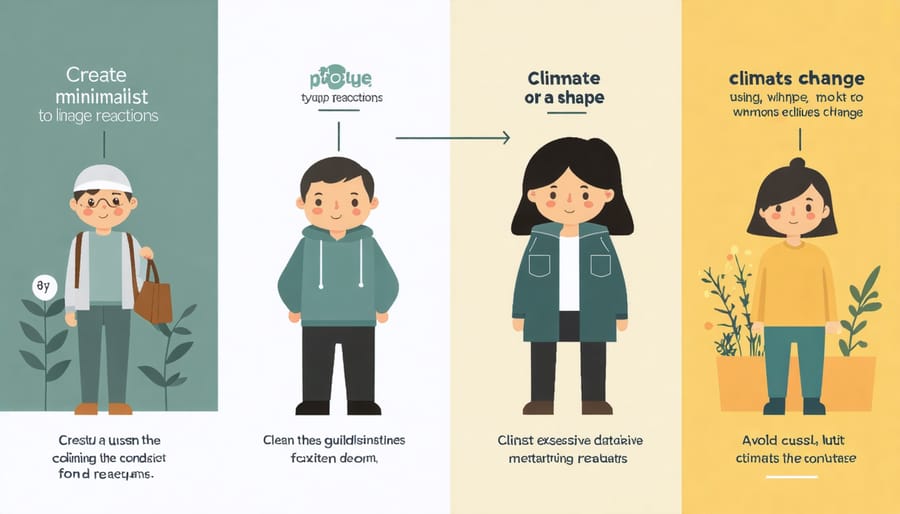
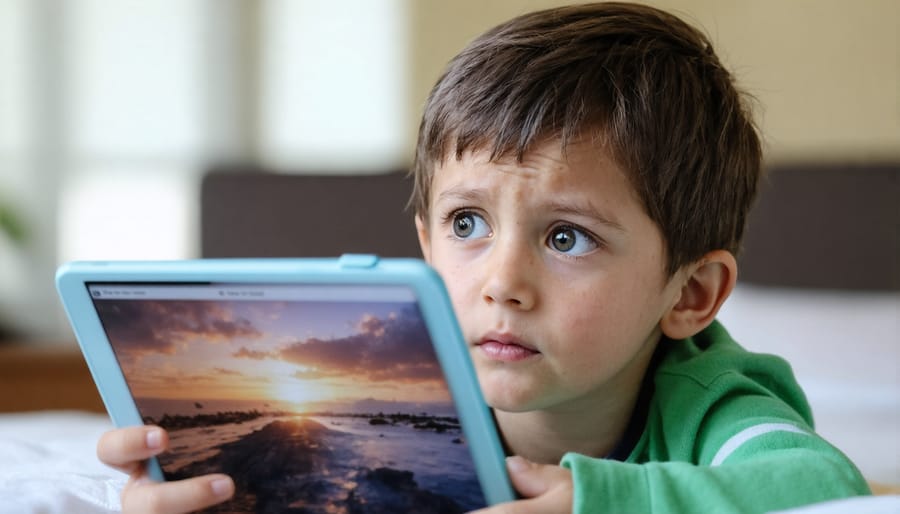
The Impact of Media Exposure
Managing Media Consumption
Balancing children’s awareness of climate change with their emotional well-being requires careful attention to their media consumption habits. For younger children (ages 5-8), limit exposure to climate news and focus on positive environmental stories, like successful conservation efforts or community gardens. Share information through age-appropriate books and activities that emphasize hope and action.
Preteens (ages 9-12) can handle more detailed information but still need guidance. Help them find reliable sources and discuss news together, addressing their concerns while highlighting solutions and positive developments. Consider setting specific times for news discussions rather than allowing constant exposure.
For teenagers, encourage critical thinking about news sources and help them find balanced perspectives. Support their interest in environmental causes while ensuring they maintain boundaries with potentially overwhelming information. Remember to check in regularly about their feelings and provide opportunities to take positive action, such as joining local environmental groups or starting school initiatives.
Supporting Your Child’s Emotional Health
Positive Action Steps
Engaging children in positive environmental activities can help transform anxiety into empowerment. Consider starting a small garden together, where children can witness firsthand how their care nurtures growth and life. This hands-on experience helps build resilience and hope while teaching valuable lessons about nature’s cycles.
Encourage your child to join or start environmental clubs at school, where they can connect with like-minded peers and work on community projects. These social connections are crucial for emotional well-being and help children feel they’re making a meaningful difference.
Create family traditions around sustainable practices, such as weekly recycling sessions or monthly neighborhood clean-ups. Turn these activities into bonding opportunities rather than obligations. When children see their parents actively participating, it reinforces the message that positive change is possible.
Remember to celebrate small victories and acknowledge your child’s efforts. Whether it’s remembering to turn off lights or choosing reusable containers for lunch, praise their thoughtful choices. This positive reinforcement helps build confidence and maintains motivation for environmental stewardship while reducing eco-anxiety.
Consider involving children in creative projects like upcycling or crafting with natural materials. These activities channel worried energy into productive expression while demonstrating how individual actions contribute to environmental care.
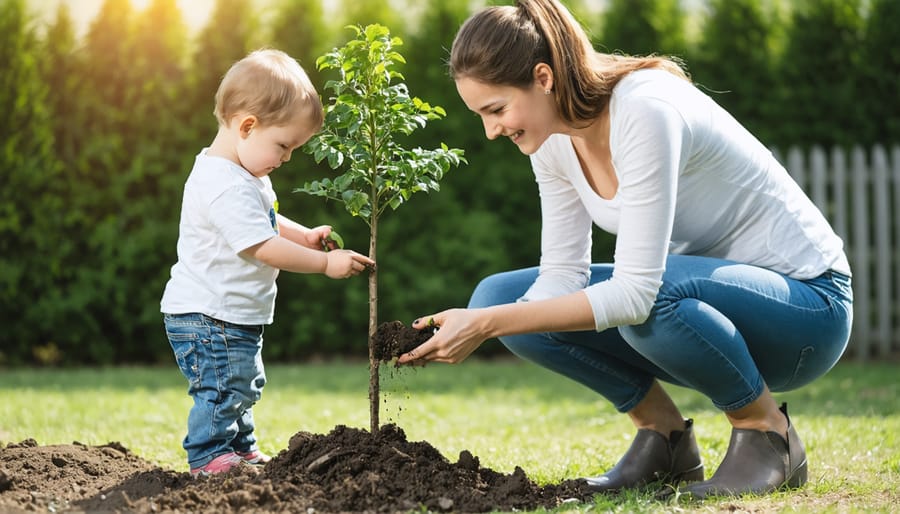
While the mental health impacts of climate change are significant, there’s reason for hope and optimism. By acknowledging these challenges and taking proactive steps, we can help our children develop resilience and cope with eco-anxiety in healthy ways. Through open conversations, positive environmental action, and community engagement, families can transform climate concerns into opportunities for growth and empowerment. Remember that children are remarkably adaptable, and with proper support, they can channel their environmental awareness into positive change. By working together, staying informed, and maintaining a balanced perspective, we can protect both our children’s emotional well-being and their future world. Every small action counts, and by fostering hope and resilience today, we’re helping create a generation of mindful, engaged, and emotionally strong individuals who are ready to face tomorrow’s challenges.

